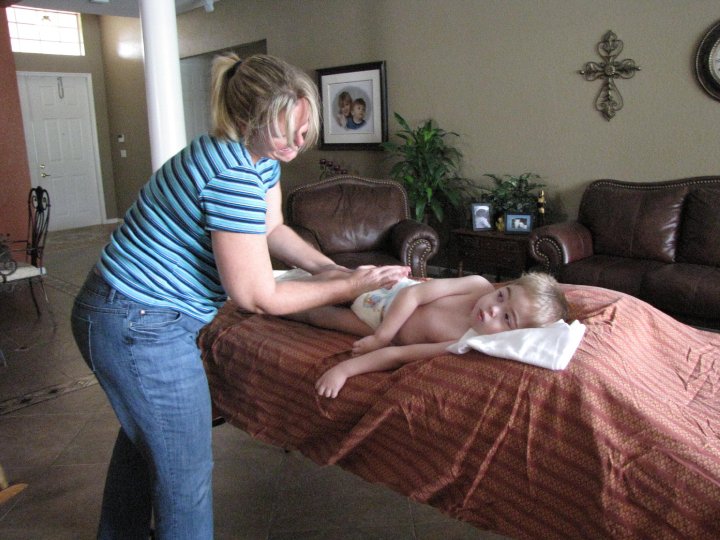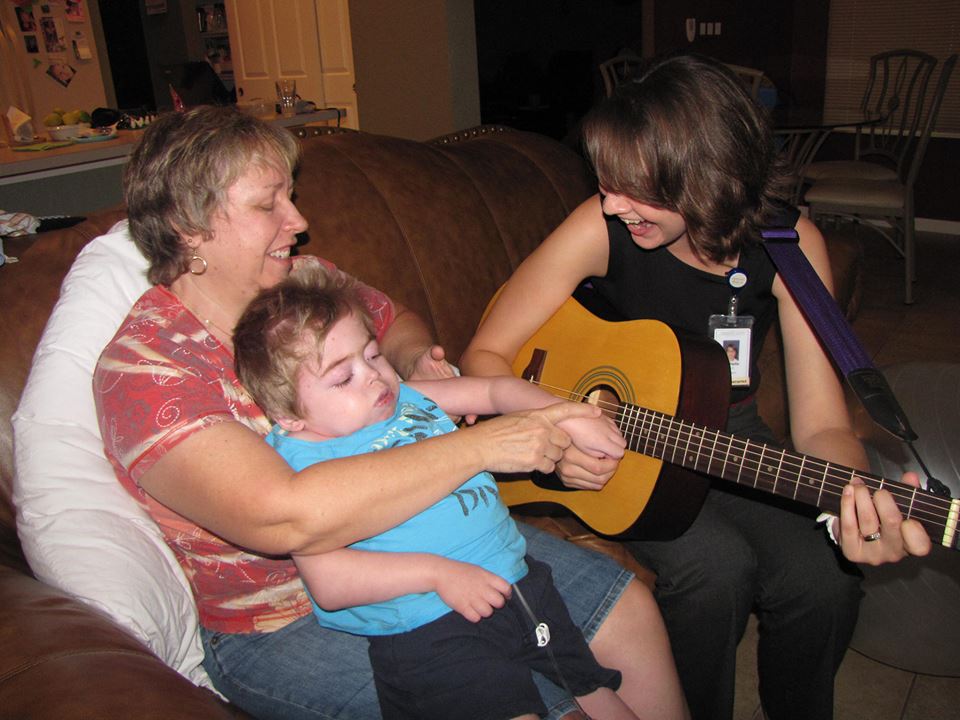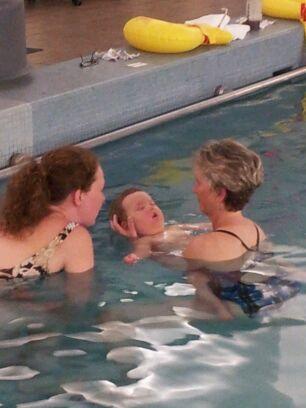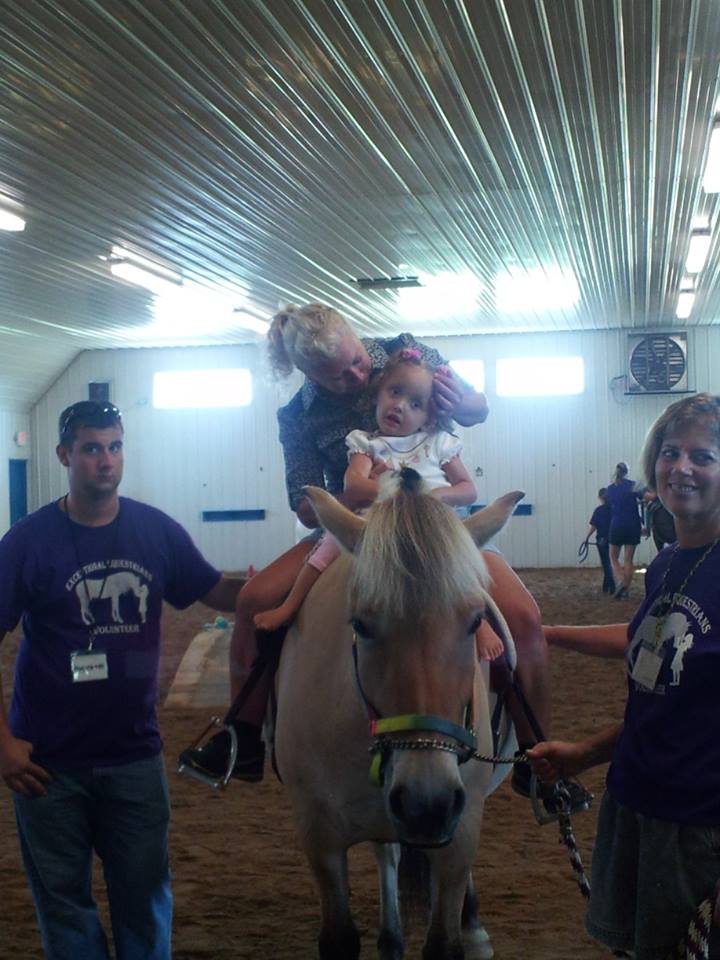Complementary Medicine
Tay-Sachs, Sandhoff, GM1, Canavan and related diseases
At an Annual NTSAD Family Conference, families discussed complementary medicine in the Health Management session. It was a lively and rich discussion that continued in Facebook groups and blogs. Complementary medicine generally refers to using a non-mainstream approach together with conventional doctor care. And the boundaries between complementary and conventional medicine overlap and change with time. For example, guided imagery and massage, both once considered complementary, are used regularly in some hospitals to help with pain management. "Anything that stimulates their senses and takes them away from their bodies or soothes their bodies is awesome and worth a try," said Elaine Martinez, Ezra's mom.
 Massage Therapy is one of the oldest healing arts with records dating back 3,000 years with benefits for many symptoms associated with Tay-Sachs and related diseases.
Massage Therapy is one of the oldest healing arts with records dating back 3,000 years with benefits for many symptoms associated with Tay-Sachs and related diseases.
- Alynda Lindley became a massage therapist after seeing how much her son Kylee enjoyed massage therapy.
- Kalah "Williams" Matthews: Massage twice a week was a miracle for her body comfort, made her easier to handle and move. She never needed any kind of pain medication or muscle relaxer.
- Jack Boyce enjoyed massage from a very early age. Hands and feet and more than anything stomach massage to encourage him to have a bowel movement.
- Isaac Sandoval usually enjoys a massage. We also do sensory integration prior to encourage alertness using the Walbarger Protocol.
Acupuncture and Acupressure use the same pressure points and meridians but acupuncture uses needles, while acupressure uses gentle to firm finger pressure. Stimulating these pressure points and meridians encourages the body to promote natural healing and improve function.
- Kalah "Williams" Matthews: Acupressure did an amazing job calming seizure activity.
 Music Therapy is an interpersonal process in which the therapist uses music and all of its facets-physical, emotional, mental, social, aesthetic, and spiritual-to help clients to improve or maintain their health and enrich quality of life.
Music Therapy is an interpersonal process in which the therapist uses music and all of its facets-physical, emotional, mental, social, aesthetic, and spiritual-to help clients to improve or maintain their health and enrich quality of life.
- William loves his music therapy. We have his music therapist come while he is doing PT as he is so relaxed during music therapy that he works better for his physical therapist.
- Ezra relaxes listening to the Qur'an. Our holy Qur'an is recited in a very melodic way and it calms him
 Water or Aquatic Therapy attempts to promote range of motion and improve overall health through the soothing affects of water. Heated or warmed pools are preferable.
Water or Aquatic Therapy attempts to promote range of motion and improve overall health through the soothing affects of water. Heated or warmed pools are preferable.
- Water therapy gets Isaac Sandoval so relaxed and allows him to move more easily.
- Jacob Jones loves water therapy!
 Hippotherapy is a physical, occupational, and speech-language therapy treatment strategy that utilizes horse movement as part of an integrated intervention program to achieve functional outcomes. The horse provides a dynamic base of support, making it an excellent tool for increasing trunk strength and control, balance, building overall postural strength and endurance, addressing weight bearing, and motor planning.
Hippotherapy is a physical, occupational, and speech-language therapy treatment strategy that utilizes horse movement as part of an integrated intervention program to achieve functional outcomes. The horse provides a dynamic base of support, making it an excellent tool for increasing trunk strength and control, balance, building overall postural strength and endurance, addressing weight bearing, and motor planning.
- Lilliana has been doing hippotherapy for two years, she is more vocal and it loosens her muscles. And without a doubt she poops after!
Other types of complementary medicine often used by NTSAD families include cranial sacral therapy, vision therapy, chiropractic, Reiki, yoga, aromatherapy, healing touch and more.
Thank you to Jan Marquez, Lorelei Sandoval and Oralea Marquardt for the leading the Complementary Medicine discussion and sharing their experiences incorporating complementary medicine into their child's care routine.

